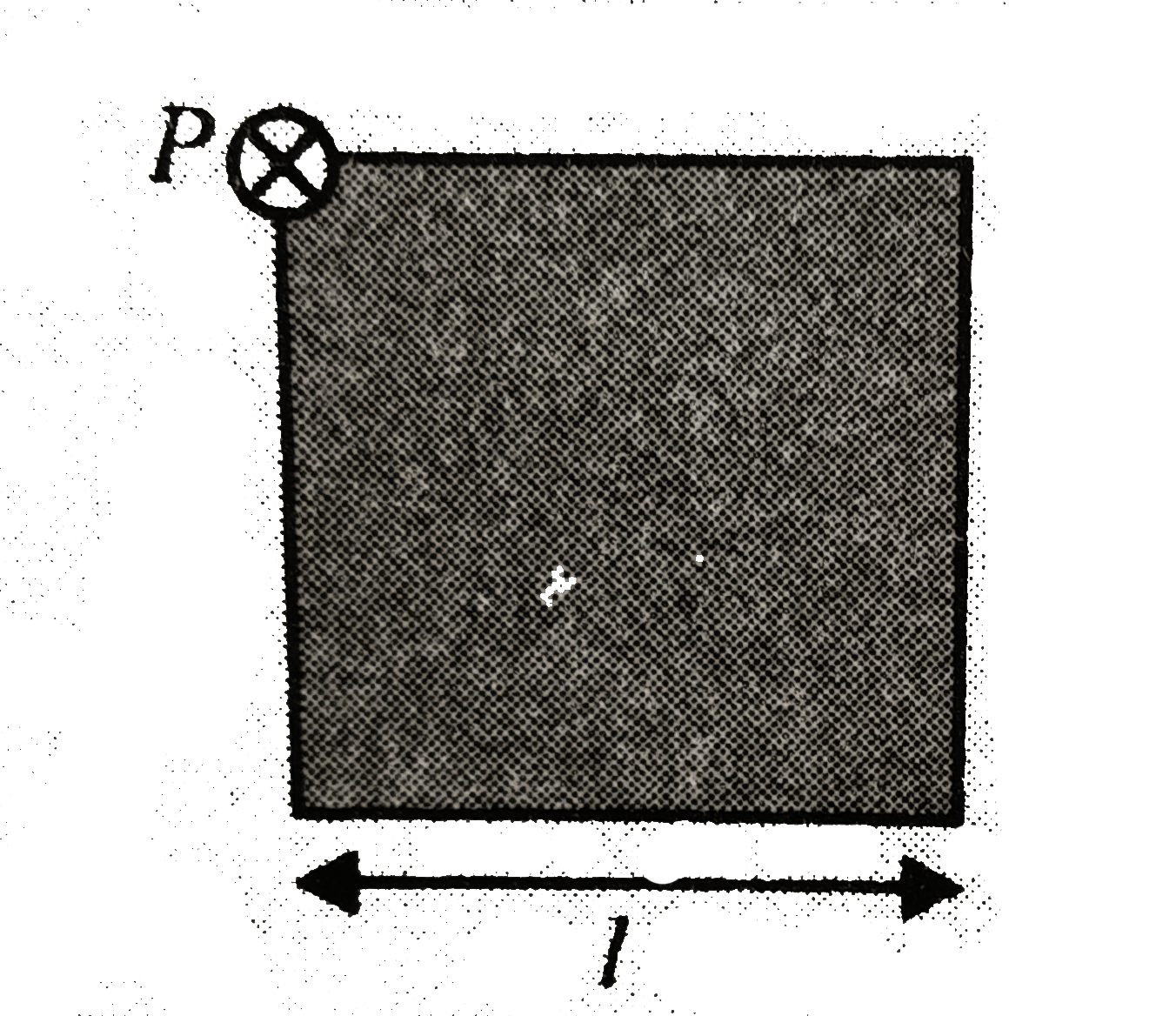The radius of gyration of a uniform square plate of mass M and side a about its diagonal is
a√6
a2√3
a2√2
a4
The correct Answer is:A
To find the radius of gyration (k) of a uniform square plate of mass M and side a about its diagonal, we can follow these steps:
Step 1: Understand the Concept of Radius of Gyration
The radius of gyration (k) is defined by the equation:
I=Mk2
where I is the moment of inertia of the object about the axis of rotation.
Step 2: Determine the Moment of Inertia about the Diagonal
For a square plate, the moment of inertia about an axis through its center and perpendicular to the plane (z-axis) is given by:
Iz=16Ma2
However, we need the moment of inertia about the diagonal. The moment of inertia about the diagonal can be derived using the perpendicular axis theorem, which states:
Iz=Ix+Iy
Since the square plate is symmetric, Ix=Iy. Thus, we can express it as:
Iz=2Ix
From the perpendicular axis theorem, we have:
Iz=16Ma2
So:
2Ix=16Ma2
This gives:
Ix=112Ma2
Step 3: Use the Parallel Axis Theorem
Now, to find the moment of inertia about the diagonal, we can use the formula:
Id=Ix+Md2
where d is the distance from the center of mass to the diagonal. For a square, this distance is:
d=a2√2
Thus, we can calculate d2:
d2=(a2√2)2=a28
Step 4: Substitute into the Moment of Inertia Equation
Now substituting Ix and d2 into the equation for Id:
Id=112Ma2+M⋅a28
To combine these, we need a common denominator:
Id=112Ma2+324Ma2
Id=224Ma2+324Ma2=524Ma2
Step 5: Solve for the Radius of Gyration
Now we can find the radius of gyration k using the equation:
Id=Mk2
Thus:
524Ma2=Mk2
Dividing both sides by M:
k2=524a2
Taking the square root:
k=a√524
Final Result
The radius of gyration of the uniform square plate about its diagonal is:
k=a2√53
The radius of gyration (k) is defined by the equation:
I=Mk2
where I is the moment of inertia of the object about the axis of rotation.
For a square plate, the moment of inertia about an axis through its center and perpendicular to the plane (z-axis) is given by:
Iz=16Ma2
However, we need the moment of inertia about the diagonal. The moment of inertia about the diagonal can be derived using the perpendicular axis theorem, which states:
Iz=Ix+Iy
Since the square plate is symmetric, Ix=Iy. Thus, we can express it as:
Iz=2Ix
From the perpendicular axis theorem, we have:
Iz=16Ma2
So:
2Ix=16Ma2
This gives:
Ix=112Ma2
Now, to find the moment of inertia about the diagonal, we can use the formula:
Id=Ix+Md2
where d is the distance from the center of mass to the diagonal. For a square, this distance is:
d=a2√2
Thus, we can calculate d2:
d2=(a2√2)2=a28
Now substituting Ix and d2 into the equation for Id:
Id=112Ma2+M⋅a28
To combine these, we need a common denominator:
Id=112Ma2+324Ma2
Id=224Ma2+324Ma2=524Ma2
Now we can find the radius of gyration k using the equation:
Id=Mk2
Thus:
524Ma2=Mk2
Dividing both sides by M:
k2=524a2
Taking the square root:
k=a√524
The radius of gyration of the uniform square plate about its diagonal is:
k=a2√53
Topper's Solved these Questions
Similar Questions
Knowledge Check
The radius of gyration of a uniform square plate of mass M and side a about its diagonal is
Aa√6Ba2√3Ca2√2Da4The radius of gyration of a square plate of side length l about a diagonal is
Al3Bl3√2Cl2√3Dl6The radius of gyration of a solid cylinder of mass M and radius R about its own axis is
AR√2BR2CR√3DR3
The moment of inertia of a uniform square plate of mass M and edge length a about one of its diagonals is
View SolutionFind the angular momentum about the axis of rotation and kinetic energy.
(a) A uniform circular disc of mass m and radius R rotating about its diameter with an angular speed ω.
(b) A uniform square plate of mass m and edge L rotating about its diagonal with an angular speed ω.
View SolutionThe radius of gyration of a uniform rod of mass m and length l about an axis perpendicular to its length and at distance l4 from its one end will be
View SolutionFind the radius of gyration of a hollow uniform sphere of radius R about its tangent.
View SolutionFind the moment of inertia of a uniform square plate of mass M and edge of length 'l' about its axis passing through P and perpendicular to it.

View Solution
